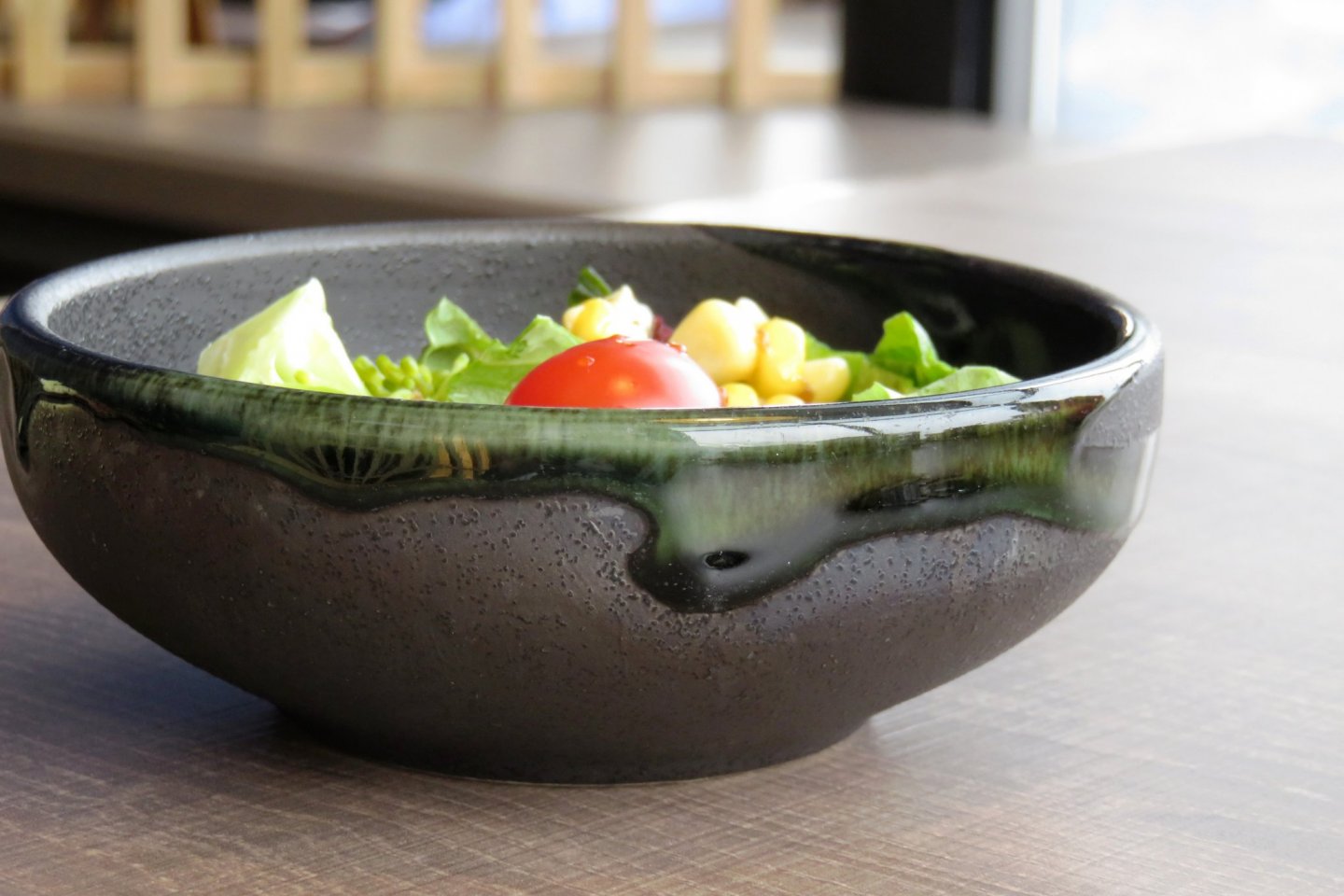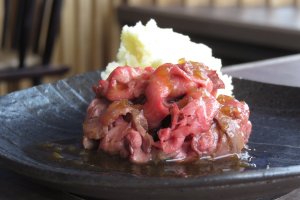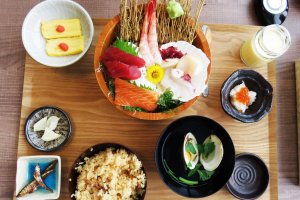Watching the snowflakes swirl outside to the slow rhythmic sounds of koto strumming, I am transported to another world, spirited away inside an Ukiyo-e scene of a kimono-clad lady braving a winter blizzard with a bamboo umbrella.
I may be in a sky-high glass tower, but taking breakfast here in the private rooms with paper screens evokes the living quarters of a ryokan in ancient Kyoto.
At Sora restaurant, it is the details that mesmerize me, down to the shape and texture of the earthenware. I can feel the hands of its maker, its fingerprints shaping and smoothing its rough edges. I sense his homage to his ancestors, to a time when a lone campfire was the only source of warmth. When I filled it with roasted green tea, its warmth became immediate. It was small enough so you can embrace it with one hand, but large enough to wrap around with both hands, its warmth transcending words on a cold morning.
The waitresses sport aprons with a maroon and white cat’s eye pattern, evoking the pride of the Ainu. The weavers sew their feelings and prayers in the cloth, protecting the wearer like a guardian spirit. In the book, The Beauty of Everyday Things, it was said that patterns are a concentration of life and nature, removing everything that distracts us from the essence of a place, plant, or object. And so, the patterns on the aprons are like an appetizer, warming us for the main event, sharpening our focus to appreciate the beauty before us. When you pickle a cucumber, you bring to the fore everything that is delicious about it. Or when you add salt to prepare a steak for a barbeque, you bring out the umami in the meat. Experiencing a meal is all about taking in the essential elements that make the fish or the pickles so delicious.
In some ways, my breakfast is like a journey into Hokkaido, played out in three acts.
Act I - An Ainu-inspired entree
Ainu ingredients are played out in the form of the su-samu, literally “fish in the pot”. Before catching these tiny fish, they would make a fire to boil a pot of water. Once the water is boiled, the fish would already be caught, such was the ease of finding them; so much so that they couldn’t stop overeating, raising the ire of the gods. Another story referred to the word Sussu-ham, the shape of the fish resembling a willow-shaped leaf, the latter respected as a “good tree” in tuytak, a two-speaking story where the willow and the elm talk wisdom. Until a hundred years ago, Hokkaido was blessed with old-growth forests, with 7000-year-old cedar trees similar to those on the World Heritage island of Yakushima. Such is their reverence, many Ainu place names are based on trees.
Today, this Shishamo or willow leaf fish does not come boiled in a pot but grilled with a sweet soy glaze. I am not always a fan of fish, but these delightfully crisp snacks are so appetizing, that I can’t stop at just one. 
Act II - Sea or land-bound
The pioneers who settled in Hokkaido in the Nineteenth century took with them many keepsakes, like the Hagama iron pot with a wooden lid, used to cook rice, as well as Kamemashi, a dish later made famous as Ekiben, a meal served on the journey north. The Hokkaido variant cooks pulled crab meat and rice together in the Hagama, making it easier to eat while traveling, and this is lovingly recreated in the crab breakfast set.
Of course, if crab or sashimi is not to your palette, there is the beef stew, as well as an unlimited supply of rare roast beef with any order, served on tasting plates at the salad buffet counter. It is their way of covering every taste, whilst preserving ryokan traditions.

Act III - A Modern Dessert
My meal ends with a tribute to modern Hokkaido, the creamery to all of Japan. The light pudding is Tomamu’s take on Crème Brulee but with a texture likened to something between a jelly and mousse, it seemed unsure what it wants to be. There are understated notes of vanilla and caramel; it is best eaten in small portions, so let the spoonfuls dance on your tastebuds.
By partaking in this meal, you become part of the living history of Hokkaido. Just don’t overeat like the folk in the Ainu story.







































